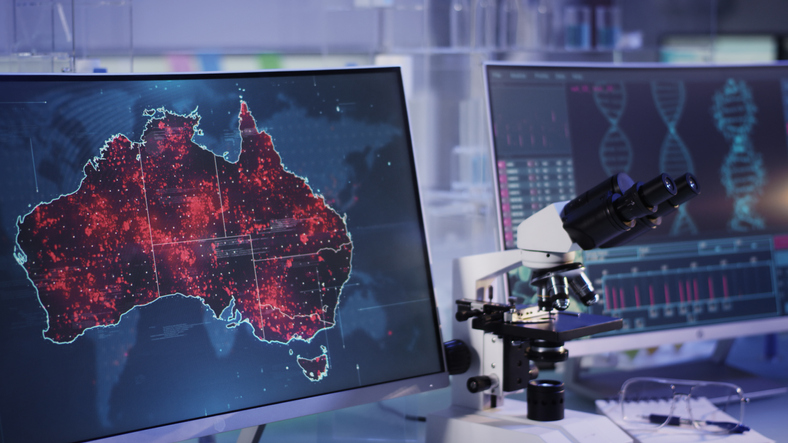Streamlining HPLC - Australia
29 mar 2021

High performance liquid chromatography (HPLC) is widely used for quantification of compounds in biological samples. However, the process can be slow and the analysis of different compound classes is best performed with dedicated columns and methods.
Researchers at The University of Queensland in Brisbane have developed an improved LC method for the simultaneous determination of sugars, carboxylates, alcohols and aldehydes in microbial fermentation samples and cell extracts. HPLC is a precise, highly reproducible technique that is frequently used for quantitative analysis of sugars, organic acids and alcohols. Numerous HPLC-based methods exist for these analyses, however, the need to run multiple dedicated protocols can reduce efficiency. Sample throughput can be increased by reducing chromatographic acquisition time, but this may compromise peak resolution and data reproducibility.
There is therefore a clear need for a method that allows the analysis of multiple compound classes in a single run, offering the perfect balance between achieving the best possible separation and maximum throughput. This kind of method would be of great benefit for combined quantification of alcohols, organic acids and sugars in the food and chemical sectors and, importantly, also in biotechnology research. Potential biotechnology applications include quantitative analysis of fermentation samples as a tool for understanding microbial phenotypes, and for the development of improved microbial strains for the production of biofuels, fine chemicals or bulk chemical feedstocks as replacements for petrochemicals. However, only a limited number of such methods have been published, and either required very high temperature operation or achieved lower compound resolutions.
Sample Analysis
The Queensland HPLC study tested 30 compounds, monitoring the interaction of the retention times of compounds from various classes with column temperature, mobile phase concentration and flow rate. Aqueous analyte solutions and the mobile phase were prepared using Type I ultrapure water (18.2 kΩ) generated by an ELGA LabWater purification system. The column was flushed overnight with the same high purity water to help prolong its lifetime.
Sugars and alcohols were monitored using a refractive index detector (RID), set on positive polarity with mobile phase in the reference cell, while organic acids were monitored using RID and/or an ultraviolet detector at 210 nm.
Finally, the method was tested on:
- fermentation broth of a genetically modified Escherichia coli fermentation during aerobic growth on glucose in minimal medium
- fermentation broth of Saccharomyces cerevisiae growing on the carbon sources glycerol and ethanol in minimal medium
- the culture supernatant of Chinese Hamster Ovary (CHO) cells in complex cell culture medium using glucose and galactose as the main carbon source
Good peak shapes and separation were achieved for all three samples, and the main substrates and products were successfully quantified.
The Results
Optimization of the operation temperature and mobile phase composition enabled the Australian researchers to develop a method for the simultaneous quantification of at least 21 compounds, including carbohydrates and varied alcohol products. This new method is highly relevant for fermentation process development, due to its suitability for mapping varied metabolic routes from carbohydrates to alcoholic products, including mono-, di-, tri-alcohols, aldehydes, mono-, di- and tri-carboxylic acids, as well as sugar acids. Results also showed broad application potential in microbiological research, providing quantitative data for a range of common substrates in microbial fermentation, such as hexoses, pentoses and disaccharides.
In addition, the method allowed 0 organic acids related to central metabolism, including gluconic acid and 2-ketogluconic acid, to be identified and quantified, making this technique suitable for microbes that favor the Embden–Meyerhof–Parnas and Entner–Doudoroff pathways for sugar utilization. Other potential biotechnology applications are the analysis of a range of alcohols currently studied as biofuels and chemical feedstock replacements, such as ethanol, 1-butanol, sec-butanol, iso-butanol, as well as 1- and 2-propanol.
Future Applications
Overall, this robust and versatile method provides a way to separate and quantify a broad range of metabolites in one HPLC run that will be suitable for a large range of samples. This includes microbial culture broth, cell culture media, and could be extended to intracellular samples and other compounds.
Why Choose ELGA LabWater in Australia?
The presence of impurities in laboratory water can be a major problem in research experiments, and can seriously compromise results. ELGA LabWater has been a trusted name in pure and ultrapure water since 1937. We believe in providing you with water purification solutions that can meet a wide range of needs and applications, backed by excellent service and support. For more information on our Type I ultrapure water systems, check out our PURELAB Quest, PURELAB Chorus 1 Complete and our PURELAB Flex models.
